Cucumbers are a great addition to any home garden, but knowing how to plant cucumber plants correctly is key to a successful harvest. Whether you’re a beginner or an experienced gardener, understanding how to grow cucumber the right way ensures healthy growth. With the right care and environment, cucumbers can thrive and produce abundantly. Follow these essential cucumber plant growing tips and discover the best tips to grow cucumbers for a fresh, homegrown supply all season long.
Top advice: Cucumber Plant Growing Tips
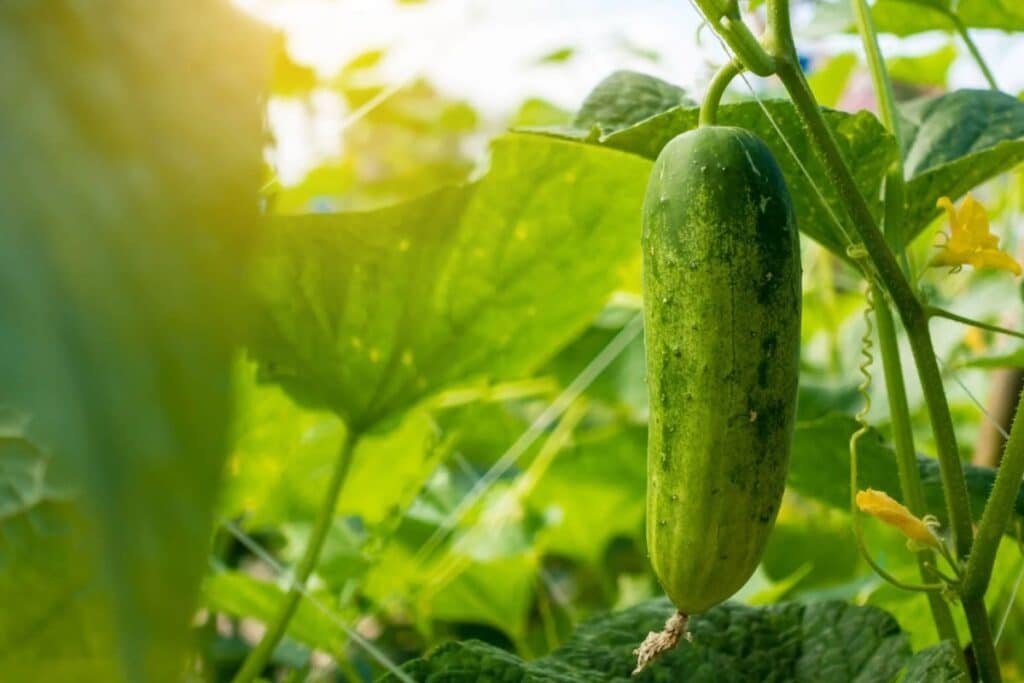
There’s really nothing like the crunch of a fresh, homegrown cucumber. In salads, while pickling, or just fresh, cucumbers are a great addition to any garden. With understanding the basics of growing cucumbers, including when to plant your cucumber seeds and how to help the pollination of the female flowers, you can increase your chances of success. By using the tips from this guide and preparing for the last frost, you will be set for a great harvest. Let’s explore cucumber plant growing tips: expert advice and know how to grow cucumber.
“This article contains affiliate links. I might get commissions from those links if you click through the link and finalize a purchase. Please read Disclosure section for more information.”
Key Highlights of Tips to Grow Cucumbers
- Cucumbers thrive in warm weather, so timing your planting is crucial! Aim to plant your cucumber seeds after the last frost, when the soil is warm and there’s no danger of frost.
- Selecting the right location in your vegetable garden can make a big difference. Full sun and well-drained, fertile soil are essential for healthy cucumber plants.
- Providing consistent care is key to a bountiful harvest. Adequate watering, mulching, and fertilizing will keep your cucumber plants healthy and productive.
- Be prepared to tackle common challenges like pests and diseases. Regularly inspect your plants and take prompt action if you notice any issues.
- With proper harvesting and storage, you can enjoy the fruits of your labor for an extended period.
Understanding the Basics of Plant Cucumber Plants
Cucumbers, known scientifically as Cucumis sativus, are vegetables that do best when it’s warm, particularly in temperatures between 70-85°F (21-29°C). With the right care, they are pretty simple to grow. However, there are some important things to remember for a successful harvest. For instance, providing good sunlight, making sure the soil drains well, and keeping moisture at a steady level are necessary.
By understanding these cucumber plant growing tips about basic needs, you help your cucumber plants to flourish. By focusing on these elements from the start, you create a perfect place for your plants to grow strong and yield lots of fresh, tasty cucumbers.
The Right Time to Plant Cucumbers in the US
Planting your cucumbers at the right time is really important for them to grow well. With heat-loving plants like these, you should plant them about 2-3 weeks after the last frost date in your area. By doing this, you make sure that the soil temperature stays warm enough for germination and you reduce the danger of frost from hurting the young seedlings.
Before planting, make sure that your soil temperature is at least 65°F (18°C). You can check this with a soil thermometer to be more accurate. Planting in cold soil can cause bad germination rates and slow growth, so it’s important to be patient. I use Urban Worm Soil Thermometer for checking soil temperature for my home garden. It is only $10 and more than 7000, 5-star ratings at Amazon. Also, I have Soil Moisture Meter Digital Plant Temperature device. By using this device, you will be able to measure the soil’s moisture content, pH, temperature, and amount of sunshine reaching the plants. That’s cucumber plant growing tips helps you know when you need to water your plants.
- Easy-to-read green, yellow, and red tick marks for easy monitoring
- 5-inch stainless steel stem penetrates soil and worm compost to the perfect depth.
- Worms are happiest between 55F and 90F. This thermometer lets you know when to cool them off or to move them to a warmer…
Keep in mind that cucumbers don’t like cold temperatures very much. Therefore, if you’re unsure, it’s generally a good idea to wait a little longer before you plant.
Selecting the Perfect Location for Plant Cucumber Plants
Choosing a good place for your cucumber plants is very important step for how to grow cucumber, getting a lot of cucumbers and helping them grow up strong. In your vegetable garden, you should pick a spot that gets at least 6-8 hours of full sun each day. About sunlight and warmth, cucumbers really need both to grow well, so having enough light is very important.
Also, make sure that your garden soil drains well and has good nutrients. Cucumber plants like soil that is a little acidic to neutral, with a pH between 6.0 and 7.0. If your soil is too heavy or made of clay, you might want to add organic matter such as compost or peat moss to help it drain better.
By picking the right place in your garden, you can make sure your cucumber plants have the best chances to grow big and give you lots of fresh, tasty cucumbers.
Preparing the Soil – Tips to Grow Cucumbers
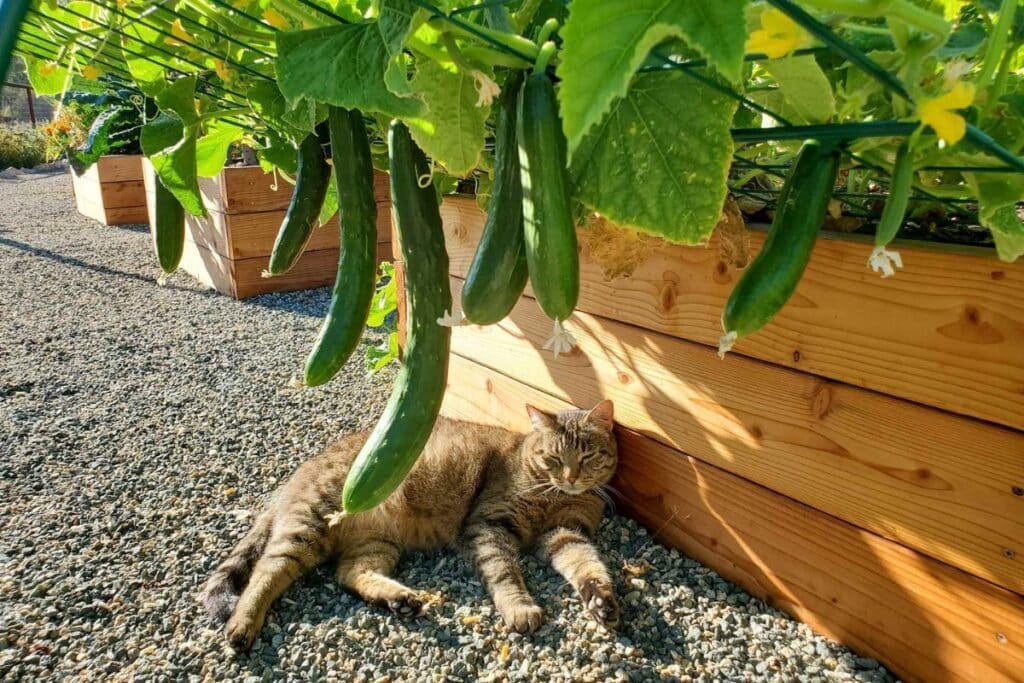
To prepare your garden soil before planting, it’s really important for giving your cucumber plants a good start. First, remove any weeds or trash from the area where you’ll plant. After that, loosen the soil to about 12 inches deep using a garden fork or tiller.
By doing this, you not only help with drainage but also make it easier for the roots to go into the soil and find important nutrients. Adding a layer of compost or well-rotted manure is a great idea. It helps add vital nutrients to the soil and improves its overall structure, making the perfect place for your cucumbers to grow.
Essential Soil Nutrients for Healthy Growth
Cucumbers grow well in fertile soil that has a lot of organic matter. Before you start planting, mix your soil with plenty of compost or well-rotted manure. With these additions, you not only give important nutrients but also make the soil better for growing and help with drainage.
For my home garden, I use Miracle-Gro Organic Raised Bed & Garden Soil. It is the best soil fertilizer. You have to feed 2 months your vegetables for getting better plants. Also, you can buy Miracle-Gro Water Soluble Plant Food Vegetables & Herbs. It works well for tomatoes, squash, peppers, cucumbers, carrots, basil, and other herbs and vegetables. Miracle-Gro Water Soluble Plant Food Vegetables and Herbs
From compost and manure, helpful microorganisms are introduced. These tiny helpers break down organic matter, making nutrients easier for your cucumber plants to use. This steady flow of nutrients is vital for promoting strong growth and good fruit production.
Tips to Grow Cucumbers: Adjusting Soil pH for Optimal Results
Cucumbers are flexible, but they like soil that is slightly acidic to neutral, with a pH between 6.0 and 7.0. Before planting, you should check your soil if you haven’t done so lately. Doing this will help you find out if you need to make any changes.
When it comes to sandy soils, they often are more acidic, while clay soils usually have more alkalinity. By adding lime, you can increase the pH of acidic soil, and to decrease the pH of alkaline soil, you can add sulfur. For many gardeners, though, just using organic matter in the soil is enough to get the right pH level.
One of cucumber plant growing tips is keep in mind that keeping the right soil pH is something you should do regularly. It’s smart to test your soil every few years to make sure your cucumber plants are getting the nutrients they require.
Read more- How to Grow Vegetable Plants Indoor
How to Grow Cucumber – Choosing the Right Cucumber Varieties
Choosing the right cucumber type can really impact your harvest, especially if you’re starting out in gardening. Think about things like how much space you have, your local climate, and if you want cucumbers for slicing, pickling, or both.
With seed catalogs and online information, you can find many choices, each with their special qualities. For gardens that are smaller, bush cucumbers work best since they take up less space than vining types. When you want cucumbers that are great for preservation, go for pickling types like ‘Boston Pickling.’
Best Varieties for Beginners – Tips to Grow Cucumbers
For people who are just starting to grow cucumbers, some types are easier to care for and produce good results. Bush cucumbers, like ‘Spacemaster’ and ‘Bush Champion’, make a perfect choice. They are small and fit well in smaller gardens or containers.
When you think about the most common varieties, ‘Marketmore 76’ stands out because of its ability to resist diseases and produce lots of regular slicing cucumbers. Meanwhile, ‘Straight Eight’ is another stable choice, known for giving straight, thin fruits.
While you look through seed catalogs or shops online, pay attention to varieties that say “easy to grow” or “beginner-friendly.” This way, you will find options that usually handle problems better and are less likely to get sick, which helps boost your chances of being successful at gardening.
High-Yield Cucumber Varieties
If you want a big harvest, some hybrid varieties have been specially grown for an amazing yield. For example, ‘Diva’ is a favorite because it can fight off powdery mildew, and it produces a lot of smooth, seedless cucumbers. Also, ‘Sweet Success’ is another hybrid choice that gives you sweet, crisp cucumbers from strong cucumber vines.
When it comes to pickling, ‘National Pickling’ and ‘Homemade Pickles’ make great options. With these varieties, you get plenty of small, firm cucumbers that are just right for keeping.
In addition, keeping the right growing conditions, watering regularly, and using enough fertilizer are very important for increasing the yield of any cucumber variety.
Planting Techniques for Cucumber Seeds
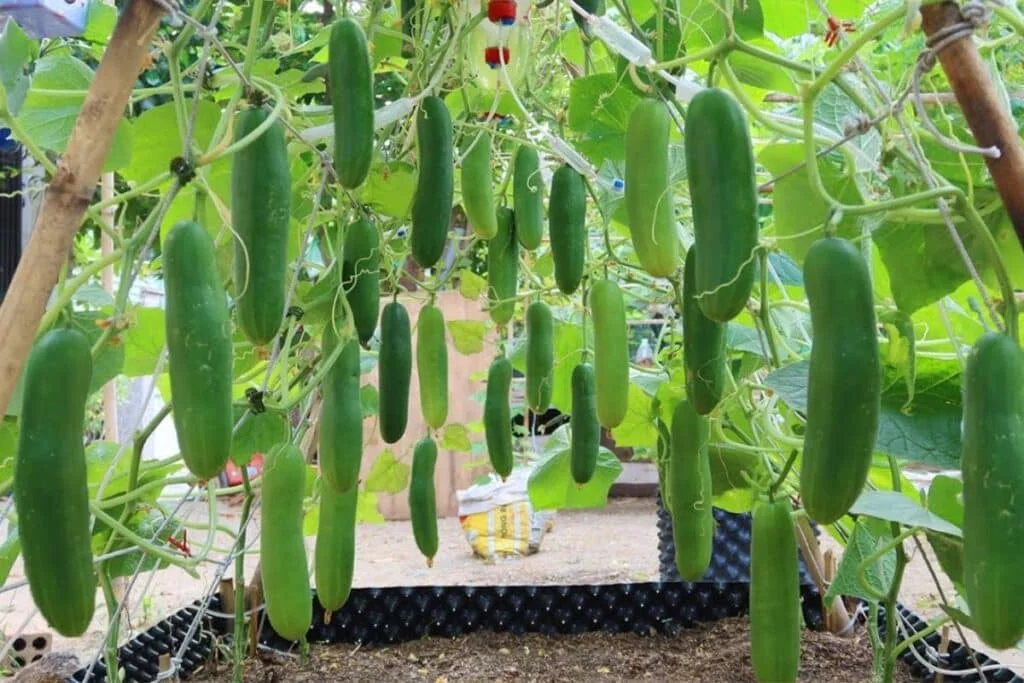
You can plant cucumbers using two main ways: either by putting seeds directly in the ground or by starting them indoors to get an earlier harvest. Each method has its benefits, and your choice should depend on your climate and what you like.
For sowing directly, it’s usually best in warmer areas. On the other hand, starting seeds indoors works well for those in cooler places. No matter what method you pick, remember to keep your soil warm and moist. This is important for good germination.
Sowing Seeds Directly into the Ground
Direct sowing is a simple way to plant outdoor cucumbers. When the soil temperature consistently hits 65°F (18°C), you can directly place seeds into your garden bed that’s been prepared. For planting, put seeds about ½ inch deep and make sure to space them 12-18 inches apart. If you decide to plant in rows, keep the rows spaced 3-4 feet apart.
With proper germination, it’s essential to maintain steady moisture. After planting, water gently but thoroughly. Overwatering is something to avoid, since it can disturb the seeds or cause fungal diseases. To help with moisture retention and weed control, covering the seeded area with a thin layer of mulch is beneficial.
By direct sowing, your cucumber seedlings can form strong root systems without the challenges of transplanting. This leads to healthier plants and could even mean higher yields.
Starting Seeds Indoors for Early Harvest
Starting cucumber seeds inside gives you an early boost in the growing season, especially where summers are short. From 3-4 weeks before your expected transplant day, sow seeds in peat pots or biodegradable starter cells. You can place these in a sunny windowsill or a small greenhouse for the warmth and light they need.
After the young seedlings show their first true leaves, you should start hardening them off. During this process, you gradually introduce them to outside conditions by letting them experience more sunlight and wind bit by bit.
When the soil temperature outside stays at a steady 65°F (18°C), it’s time to transplant your hardened-off seedlings into the garden. Always remember to handle them gently to reduce any root disturbance.
Caring for Plant Cucumber Plants
After your cucumber plants are settled, it’s really important to take care of them well. This gives them the best chance for strong growth and a good harvest. With enough water, nutrients, and support, your cucumber plants can stay healthy and productive during the growing season.
Also, make sure to check your plants often for any signs of pests or diseases. If you see something unusual, act quickly. By dealing with issues right away, you might stop them from getting worse.
Watering Practices for Robust Growth
Watering consistently is important for healthy cucumber plants, especially during hot and dry times. To keep them thriving, aim for about an inch of water each week, either from rainfall or additional irrigation. Water them deeply but less often, as this helps the roots grow deep.
Try to avoid overhead watering when you can, since it might raise the chance of fungal diseases. Instead, water at the base of the plants using a soaker hose or a drip irrigation system to send water straight to where it’s needed.
Keeping an eye on soil moisture is essential to avoid both not watering enough or overwatering. You can check by sticking your finger into the soil; if it feels dry about an inch down, then it’s time to water.
Tips to Grow Cucumbers: The Importance of Mulching and Weed Control
Putting a layer of mulch around your cucumber plants gives you many good things. For one, mulch helps keep the soil moist, holds back weeds, and controls the soil temperature. It also keeps your cucumbers clean by stopping them from touching the soil.
With this in mind, organic mulches like straw, shredded leaves, or grass clippings are great options. They break down over time, which adds useful organic matter to the soil. Use a 2-3 inch layer of mulch around each plant, but be careful not to mound it right against the stems.
Because effective weed control is very important, weeds will take water, nutrients, and sunlight from your cucumber plants. It’s good to regularly hoe or pull out any weeds that show up in your cucumber bed.
Fertilization Strategies for Plant Cucumber Plants
While compost and manure give cucumber plants a solid nutrient base, additional fertilization helps them thrive throughout the growing season. You can use a balanced fertilizer, like a 10-10-10 or 5-5-5 formula, every 3-4 weeks.
For planting, you might consider using a slow-release granular fertilizer. At the time of planting, sprinkle the fertilizer around the plants’ base, but make sure to keep it away from the stems, and then water it well.
Because over-fertilization can cause too much leaf growth instead of fruit production, it’s important to follow the suggested application amounts listed on the fertilizer package.
Navigating Common Challenges – Cucumber Plant Growing Tips
Sometimes, even when you give the best care, cucumber plants can face challenges. These challenges can include pests, diseases, and problems with pollination. By being aware of these possible issues, you can learn how to fix them, which helps ensure you have a successful harvest.
From time to time, check your plants for any signs that could indicate trouble. If you spot something unusual, it’s important to act quickly. With early detection, you can reduce damage and keep your cucumber plants safe.
Identifying and Treating Pests and Diseases
Several pests and diseases can cause issues for cucumber plants. Among them, bacterial wilt often stands out as a major problem, primarily spread by cucumber beetles. Within the plants, you might notice wilting leaves and stems that end up turning brown and eventually dying.
Also, powdery mildew is another common trouble. This fungal disease presents itself as white, powdery spots on the leaves. It does best in humid conditions, which can really make the plants get weak.
For preventing and managing these issues, you can practice good garden hygiene by quickly removing any infected plant debris. Also, you could select disease-resistant cucumber varieties. Moreover, rotating your planting area each year helps in minimizing the buildup of soilborne pathogens.
Managing Pollination for Maximum Yield
Successful pollination is very important for cucumbers to grow fruit. With cucumber plants, there are both male flowers and female flowers. The male flowers create pollen, which must move to the female flowers for fertilization to take place.
Most of the time, bees and other pollinators help with this job, but if needed, you can also hand-pollinate your cucumbers. For hand-pollination, you can use a small brush or a cotton swab to carry pollen from the male flower’s anther to the female flower’s stigma.
In addition, planting a range of flowering plants can create a pollinator-friendly garden. This way, you can attract these helpful insects to your cucumbers.
Solutions for How to Grow Cucumber
When you see problems with your cucumber plants, like not growing well or having weird-looking fruits, there might be a few reasons for it. One reason might be the cucumber beetle. This bug can hurt the leaves, spread leaf diseases, and cause bacterial wilt.
On the other hand, another reason could be a lack of pollinators. If there aren’t enough bees or other insects that help in pollination around your garden, the flowers on your cucumber plants might not be getting pollinated well, leading to not many fruits.
Moreover, environmental issues can play a role, too. Conditions like very hot or cold temperatures, not enough or too much water, or even missing nutrients can affect how well cucumbers grow. It’s important to check your plants’ conditions regularly. Make sure they have enough water, sunlight, and nutrients to thrive.
Advanced Techniques for Bigger Yields
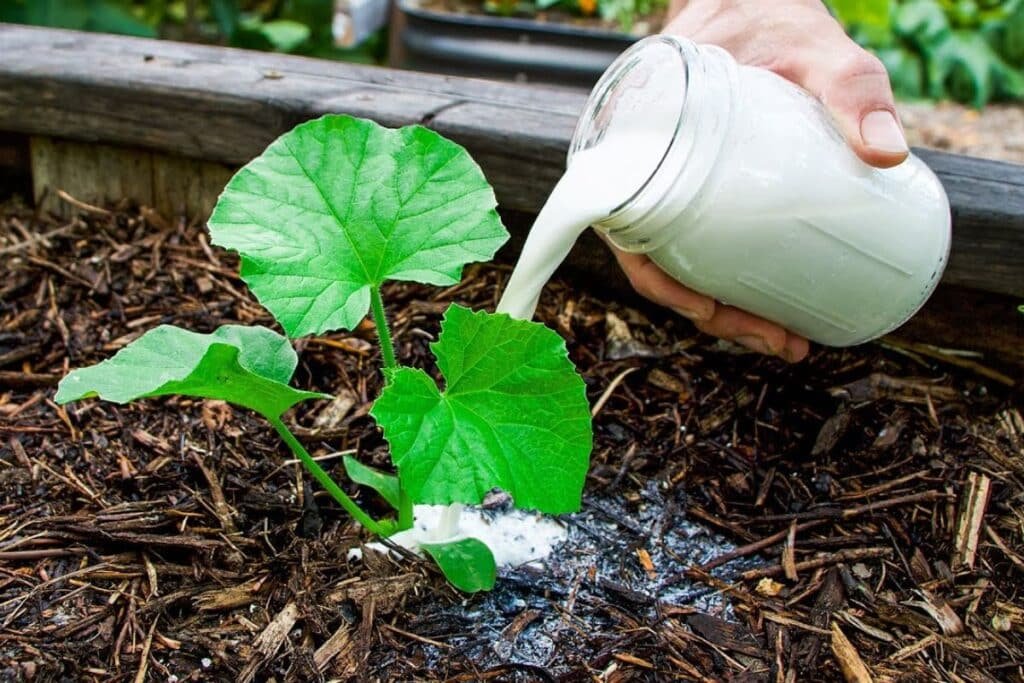
After you learn the basics of growing cucumbers, you might want to use some advanced methods to boost your harvest. With these techniques, you can make the most of your space, keep your plants healthy, and even make the harvesting time longer.
By trying out different approaches, you can find what suits your garden best. Feel free to test something different and watch how it changes your cucumber yield.
Implementing Vertical Gardening for Plant Cucumber Plants
Trellising your cucumber plants is a great way to save space, get better air flow, and improve the quality of the fruits. With vertical gardening, you really maximize your garden area while giving your cucumber plants many advantages.
As cucumbers grow up a trellis, they get improved air circulation, which lessens the chance of getting fungal diseases. Furthermore, trellising keeps the cucumbers off the ground. This helps stop them from rotting or getting harmed by pests.
You should select a strong trellis or support that can support the weight of the cucumber vines as they grow. A-frame trellises, cattle panels, or even strong fences can be good options. For climbing support, remember to gently tie the vines to the support using garden twine or soft plant ties.
Companion Planting to Enhance Growth
Companion planting is a smart way to garden. It means putting different plants close together so they help each other. With this technique, you can boost biodiversity in your garden. You might also enjoy better growth and yields for your cucumbers.
By planting flowers, like nasturtiums or sunflowers, close to your cucumbers, you can draw in beneficial insects. This includes pollinators such as bees and butterflies. With their help, your cucumber plants can have a fantastic pollination process, leading to lots of fruit.
In addition to flowers, some herbs, including dill, oregano, and chamomile, can keep pests away and make the soil healthier. Their nice scents can hide the smell of cucumbers, making it tough for pests to find them.
Harvesting and Storing Tips to Grow Cucumbers
Knowing when to pick your cucumbers and understanding how to do it right is really important for the best taste and feel. If you harvest too soon, the cucumbers might be small and not fully grown. On the other hand, if you wait too long, they can turn bitter and full of seeds.
For storing your cucumbers after you pick them, doing it the right way helps keep them fresh and crunchy. You can either put them in the fridge or try some other ways to preserve them. By learning about the best storage methods, you’ll make sure they last longer.
Signs Your Cucumbers Are Ready to Harvest
Knowing the signs of maturity helps you pick the best crisp cucumbers for great taste. After planting, cucumbers usually need about 50-70 days before they are ready to pick, and that’s based on the type you have. With this in mind, make sure to check your plants often, since cucumbers can grow very quickly.
At the right time, you should harvest cucumbers while they are still young and tender. To avoid a bitter taste, do not let them get too mature. Even though the size can depend on the variety, most slicing cucumbers taste best when they reach about 6-8 inches long.
With a sharp knife or pruning shears, cut the cucumbers from the vine, making sure to leave a bit of the stem attached. This way, you can help protect the plant from damage and lower the chance of disease.
Best Practices for Storing Cucumbers
To maintain the freshness and extend the shelf life of your harvested cucumbers, proper storage is essential. After picking, it’s crucial to keep them cool and moist to prevent wilting. Storing them in the fridge is typically the best approach for short-term storage.
Wrap cucumbers individually in plastic wrap or store them in a perforated plastic bag in the crisper drawer of your fridge.
Here’s a quick reference table for different storage methods and their estimated shelf life:
| Storage Method | Estimated Shelf Life |
| Refrigerator (wrapped) | 7-10 days |
| Cool, dark place (unwrapped) | 2-3 days |
| Pickled | Several months to a year |
Enjoying Your Harvest With Cucumber Plant Growing Tips
After spending time plant cucumber plants, you can finally taste their fresh, crunchy flavor. Besides just cutting them for salads, many fun ways exist to add cucumbers to your meals and experience their refreshing taste.
With delicious dips and drinks that cool your thirst, opportunities are endless for adding these homegrown treasures to your cooking. Discover your favorite ways to enjoy the results of your hard work!
Creative Cucumber Recipes for Every Meal
Cucumbers are really useful and can be used in many different recipes besides ordinary fresh salads. Their light, fresh taste makes them a great choice for appetizers, main dishes, and even some desserts.
To make a simple but tasty snack, here are some suggestions:
- Cucumber and Yogurt Dip: Mix grated cucumber, Greek yogurt, fresh dill, lemon juice, and garlic together for a yummy dip.
- Cucumber Sandwiches: Serve thinly sliced cucumbers, cream cheese, and fresh herbs on whole-wheat bread for an ideal light lunch.
In case you want to keep your cucumbers for a while, pickling is an old-fashioned method. Many people enjoy sweet, dill, or bread and butter pickles, and there’s a recipe for everyone.
Preserving Cucumbers: Pickling and More
Preserving your cucumber harvest helps you enjoy them long after the growing season is over. Pickling serves as a common way to preserve cucumbers. By submerging them in a brine solution, which generally contains vinegar, salt, and spices, you make delicious and tangy pickles.
With different pickling recipes, you can find what matches your taste. For example, some popular types include dill pickles, bread and butter pickles, and sweet pickles. By canning your pickled cucumbers, you can store them for a longer time.
Conclusion How to Grow Cucumber
To sum up, plant cucumber plants successfully needs a mix of knowledge, care, and patience. With the right varieties, proper planting, and solving common problems, every step is important for your cucumber plants’ health and how well they produce. Using extra methods like vertical gardening and companion planting can boost your harvest even more. Keep in mind to pick your cucumbers at the right time and store them correctly. With focus and care, you can have a great cucumber harvest and try fun recipes or ways to preserve your home-grown produce. Enjoy your gardening!
Frequently Asked Questions for Cucumber Plant Growing Tips
How long does it take for cucumbers to grow?
The time needed for cucumbers to grow varies based on the type and your local growing season. Usually, you can see germination happening within 7-10 days after planting. Generally, most cucumber types are ready for harvest roughly 50-70 days after you plant them.
Do cucumbers need full sun to thrive?
Cucumbers grow best in full sun. They need about 6-8 hours of direct sunlight every day to grow well and make fruit. With enough sunlight, the plants can do proper photosynthesis, which is important for them to get energy and flourish.
Can cucumbers grow in pots or containers?
For sure! You can grow cucumbers in containers or pots, which makes them great for space-saving gardening on patios, balconies, or decks. When picking the right plants, remember to select a compact bush variety. Additionally, it’s important to use a pot that holds at least 5 gallons of soil.
How often should I water my cucumber plants?
For cucumbers, consistent watering is really important, especially when the weather gets hot and dry. You should aim for around an inch of water each week. By watering deeply and doing it less often, you help the roots grow deeper and make sure they get the right amount of hydration.

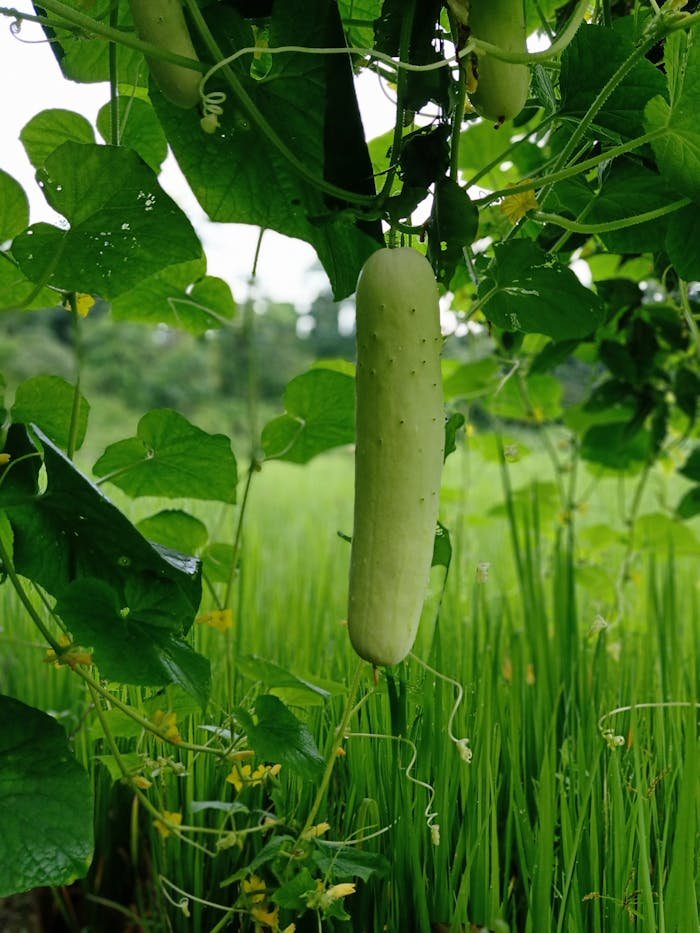



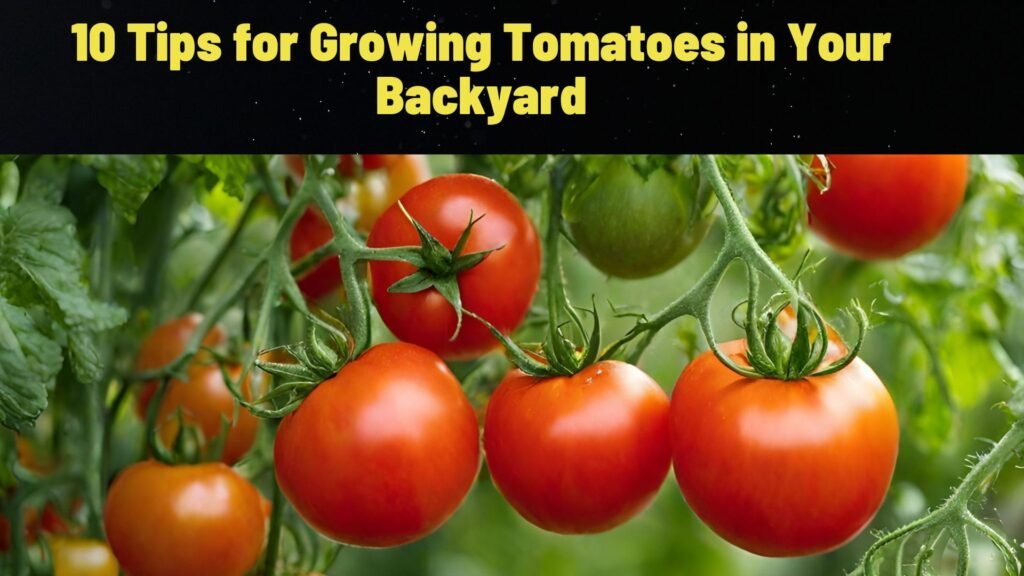
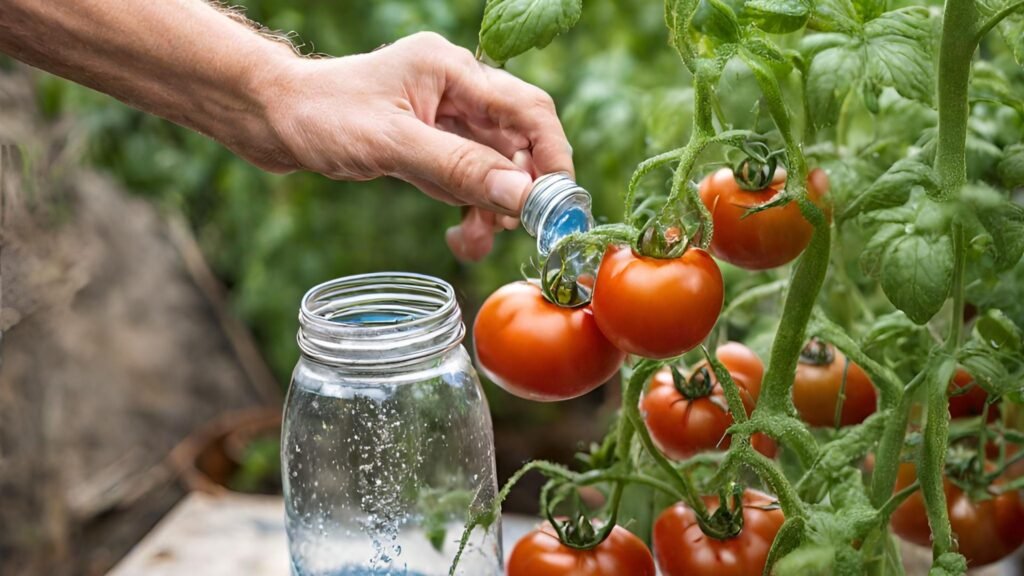
Pingback: Growing Vegetable Plants Indoors: Avoid Common Mistakes